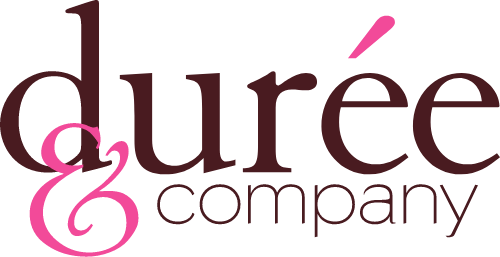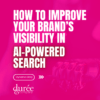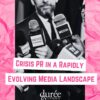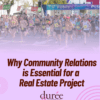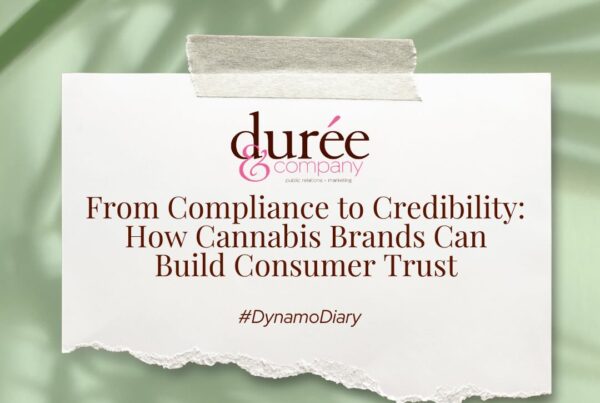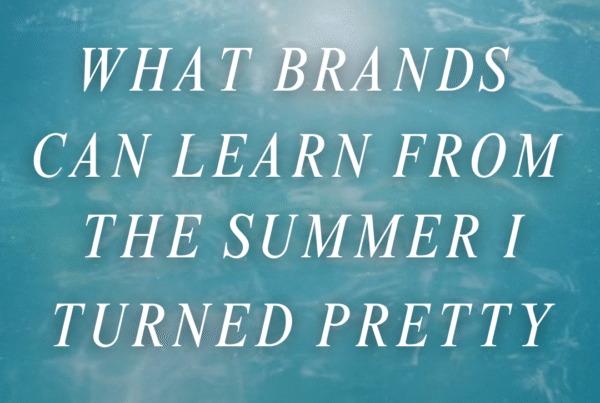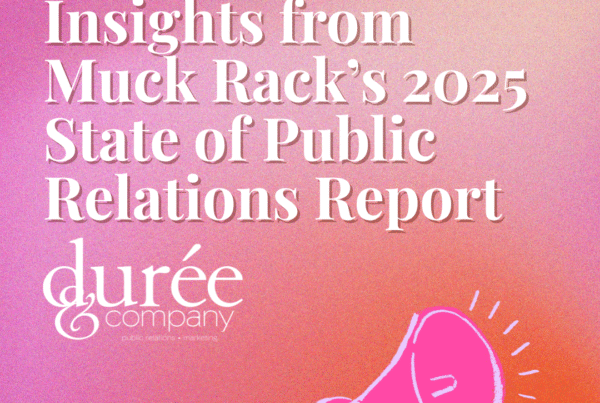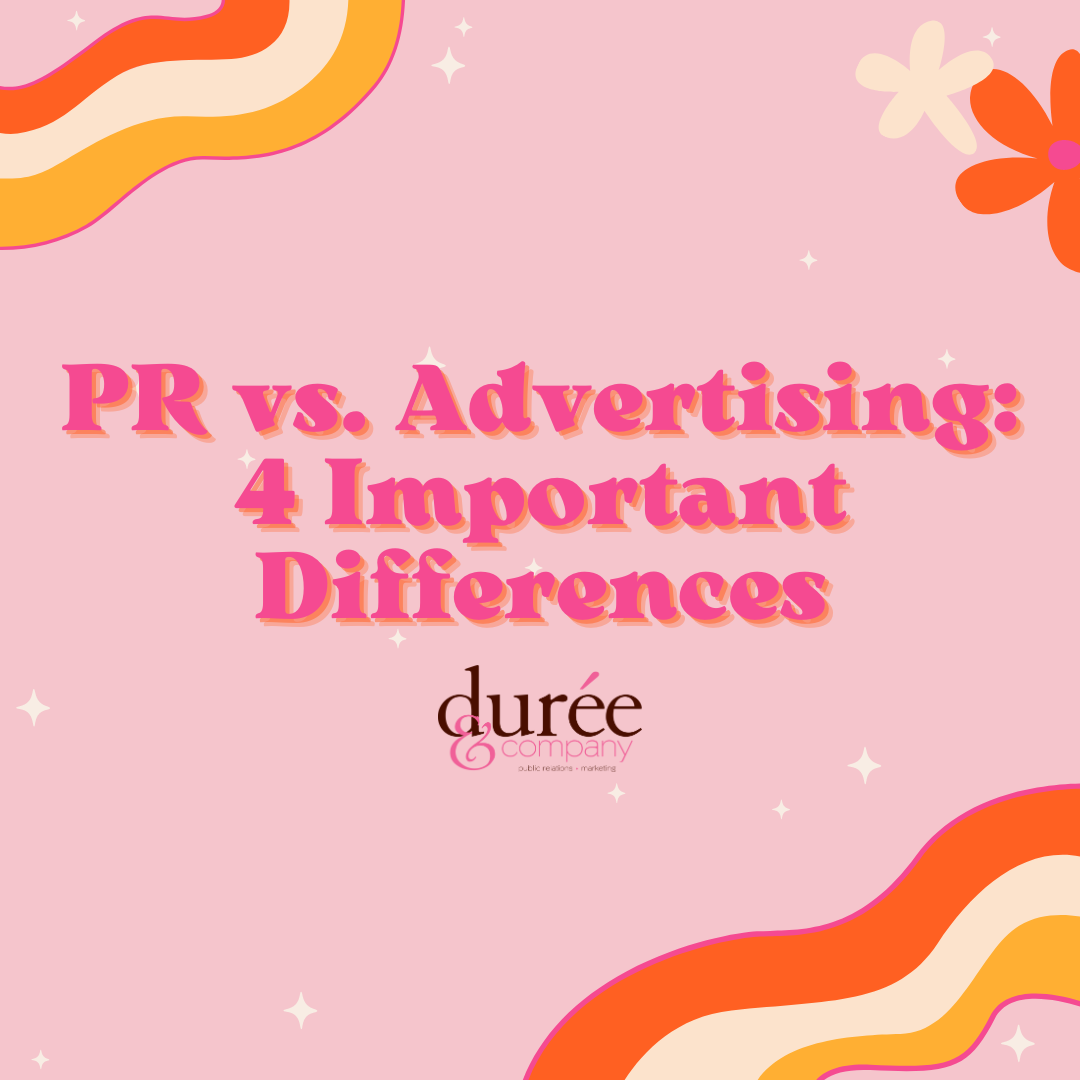
Why are advertising and public relations essential to brands? Both help get the word out about a brand and its news, but their approaches are different. At Fort Lauderdale and Aspen-based public relations agency Durée & Company, we know that advertising and PR work interchangeably in establishing business sales, credibility, visibility and reputation. They work together to share a unified brand image and message that is easily recognized. When a business is new to outsourcing advertising or public relations, it might struggle to understand the differences between PR vs. advertising, particularly when it comes to what an agency can do for them. Let’s break down the differences between advertising vs. public relations.
- Advertising prioritizes short-term goals; PR focuses on long-term goals.
Advertising focuses on sales promotion and customer acquisition, while public relations prioritizes building and maintaining positive relationships and brand image.
Advertising is about grabbing attention, often with memorable campaigns that can linger in people’s memories for years. However, it typically has a shorter shelf life compared to PR efforts.
If a brand were to place ads in a magazine or newspaper, they might be easily overlooked by readers. However, when a publicist partners with a journalist to feature a brand or its story in an article, it’s perceived as a third-party endorsement. This tends to grab consumers’ attention and make the brand more memorable.
- Advertising is paid media; PR is earned media.
Public relations involves earned media instead of paid media. This means PR efforts are comprised of maintaining relationships with stakeholders, including clients, customers, employees, and media.
A public relations manager can pitch a business’s new product to a reporter in the media with whom they have an established relationship with. If the journalist covers the product or company in a story, it’s earned media. The journalist wasn’t paid to write about or report on this news from a brand.
Advertising is paid media.
These placements about a business’s new product or announcement are purchased and paid to television, radio stations, podcasters, magazine and newspaper publishers, search engine companies, and social media brands.
PR brands aim to generate media coverage free of cost, while advertisements are always paid for.
- Advertising targets an audience, PR targets a wider realm.
Advertising aims to persuade its target audience to take action.
These actions include, but are not limited to:
- Making a purchase
- Visiting a website
- Booking a call or visit with a salesperson
- Making an appointment to learn more about a product or service
- Engaging in social media content that was served up in an ad
Public relations firms typically use news, press releases, interviews, pitches and influencer partnerships to get the word out about their client. Social media also plays a crucial role in PR strategies, as PR professionals often utilize platforms including Facebook, Instagram, X, TikTok, Pinterest, YouTube and LinkedIn to amplify their client’s message, engage with the audience, and build brand credibility through authentic interactions and storytelling.
In efforts to target a wider net, PR representatives aim to build brand credibility. This is a primary reason PR firms partner with influencers and celebrities.
Think about it this way, a restaurant might pay for advertising on Facebook and target a specific geographic audience or advertise on local television stations or radio stations announcing their updated menu.
A public relations professional might host an event at the restaurant and invite local, regional, and/or relevant national media to taste the new menu, hoping they get coverage. Alternatively, they might invite a national celebrity or collaborate with influencers to have a complimentary media dine experience at the restaurant. They would encourage these influencers to share photos of the food while tagging the restaurant’s social media handles and using hashtags. This approach would reach a wider audience and let them know about the restaurant.
- PR differs from advertising in terms of credibility and personalization
PR focuses on building sustainable relationships and managing crises, emphasizing personal connections between brands and audiences. Public relations firms play a crucial role in this aspect.
Advertising typically relies on one-way communication, while PR engages in more fluid conversations involving all parties.
Suppose a cannabis brand invests in advertising space on a highway billboard. A potential customer drives by and notices it. However, due to regulations, advertising for cannabis products might not be permitted in certain locations. Conversely, advertising for CBD and hemp products is allowed in some instances. On the other hand, when that same cannabis brand hires a reputable public relations agency such as Durée & Company, consumers might come across the brand through other various, approved channels.
PR agencies understand the strict regulations surrounding cannabis marketing and refrain from making unsubstantiated claims. Instead, they rely on third-party endorsements and authentic storytelling to convey the brand’s message within legal boundaries.
When that same cannabis brand hires a great public relations agency, Durée & Company, one might read about that brand in a local newspaper story, and then see several posts about the brand on social media. They might also watch a business segment on the local news about the company’s founders, and hear about a media event the cannabidiol company hosted with local media on the radio.
PR is about spreading information about a company through third parties by generating interest and excitement.
Advertising is bought and targets a specific segment of the public with a brand’s announcement.
Public relations is a communication strategy that builds trust in the company through third-party relationships. PR aims to capture attention through an attention-grabbing announcement or story and engage a wide audience.
Ready to enlist an award-winning public relations agency that can also help with your marketing and advertising goals? Contact the Durée & Company team today.
About Durée & Company, Inc.
Founded in 1999, Durée & Company is a full-service, well-respected and highly creative public relations and marketing agency serving a diverse client base of local, national and international consumer brands, landmark industries, business leaders and philanthropists from its offices in Fort Lauderdale, Florida and Aspen, Colorado. Practice areas include nonprofit, hospitality, business, lifestyle, health and wellness, legal, real estate, yacht and marine as well as cannabis, psychedelics, and other emerging industries. Durée & Company is a member of some of the nation’s most elite professional organizations including PR Boutiques International™ (PRBI), The Cannabis Marketing Association and is a corporate partner of Cannabis LAB. To learn more, call 954-723-9350; go to dureeandcompany.com; cannabismarketingpr.com; or psychedelicpr.com. Join the social conversation and follow Durée & Company on Facebook, Instagram, X, YouTube and LinkedIn at @DureeCoPR.
